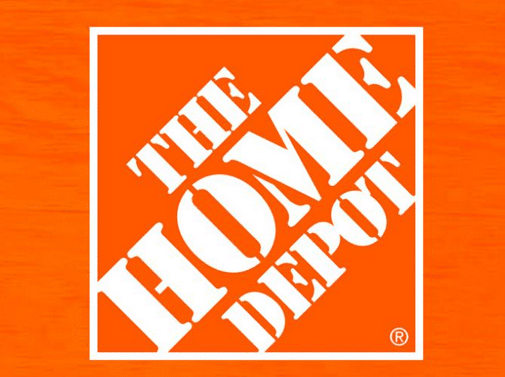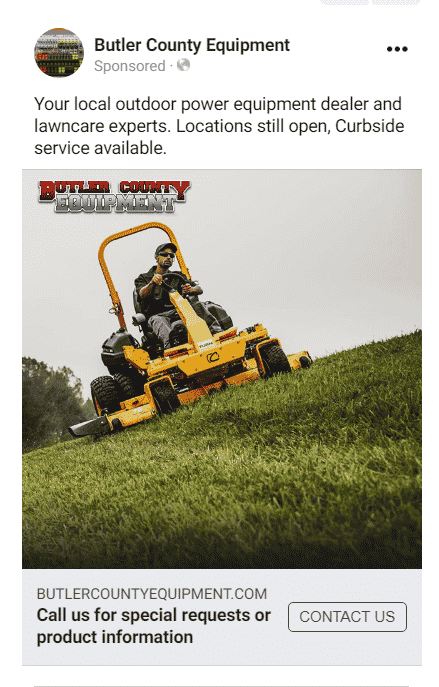Greening Your Strategies with Data Driven Marketing Insights
Standing out from the competition requires more than just quality products and exceptional service. Effective marketing serves as the driving force that connects businesses with their target customers, creating a bridge of awareness and engagement that can ultimately translate into increased sales and loyal clientele. As the digital landscape continues to evolve, embracing innovative approaches becomes paramount, and one such approach that holds immense promise is data driven marketing.
In this age of digital transformation, where information flows freely and consumer preferences shift rapidly, data driven marketing emerges as a beacon of strategic insight and precision. Traditional marketing methods, while still relevant, often lack the accuracy and agility demanded by the modern consumer. Enter data driven marketing, a methodology that harnesses the power of customer data, behavior patterns, and trends to inform marketing decisions with remarkable accuracy. The lawnmower dealership industry, like any other, can significantly benefit from adopting this approach to shape and refine their marketing strategies.
Throughout the journey ahead, we will explore the multifaceted advantages this approach brings to the table. From gaining profound customer insights and optimizing marketing campaigns to efficiently allocating resources and enhancing the overall customer experience, data driven marketing serves as an invaluable toolkit for dealerships looking to thrive in this dynamic environment.
Understanding Data Driven Marketing
In a landscape where information is the currency of success, data driven marketing emerges as a strategic cornerstone for lawnmower dealerships aiming to cultivate a thriving online presence. At its core, data driven marketing involves making informed decisions based on insights extracted from various data sources. This approach fundamentally reshapes the marketing landscape, steering it away from gut feelings and assumptions and towards a realm of calculated precision.
Defining Data Driven Marketing and its Core Principles
Data driven marketing encompasses the systematic utilization of data to inform and optimize every facet of marketing strategies. Unlike traditional marketing, which often relies on generalized approaches and best guesses, data driven marketing hinges on empirical evidence and quantifiable results. Its core principles lie in capturing, analyzing, and interpreting data to reveal actionable insights that guide marketing decisions.
Divergence from Traditional Approaches
Data-driven decisions stand in stark contrast to the traditional methods that have long dominated the marketing arena. While conventional marketing approaches involve creating campaigns based on broad assumptions about target audiences, data driven marketing places the audience under the microscope. This approach is characterized by a deep understanding of customer behavior, preferences, and pain points, leading to campaigns that are not only relevant but resonate on a personal level.
Harnessing Customer Data for Precision Campaigns
One of the most compelling advantages of data driven marketing is its ability to harness customer data to create targeted campaigns. For lawnmower dealerships, this means moving beyond generic promotional efforts and tailoring messaging to specific customer segments. By analyzing data such as past purchases, browsing behavior, and demographics, dealerships can craft compelling campaigns that address individual needs and preferences. This precision not only enhances the effectiveness of marketing efforts but also cultivates a sense of customer engagement and loyalty.
Relevance in the Lawnmower Dealership Context
The significance of data driven marketing is particularly pronounced in the lawnmower dealership realm. With a deep understanding of customer behavior, such as the frequency of lawn maintenance, preferred mower types, and seasonal trends, dealerships can craft timely and resonant campaigns. For instance, leveraging data on seasonal spikes in demand for certain mower models can guide inventory decisions and promotional timing.
In essence, data driven marketing is not just a buzzword but a transformative approach that empowers lawnmower dealerships to forge meaningful connections with their target audience. The next sections of this blog post will delve into the specific benefits, strategies, and tools that make data driven marketing an indispensable asset for thriving in the digital age of lawnmower dealership marketing.
The Benefits of Data Driven Marketing for Lawnmower Dealerships
In the dynamic landscape of lawnmower dealership marketing, embracing data-driven strategies opens doors to a multitude of advantages that can propel businesses to new heights of success.
Enhanced Customer Insights
At the heart of data driven marketing lies the ability to gain unparalleled insights into customer behavior, preferences, and needs. Utilizing data collected from various touchpoints, lawnmower dealerships can develop a comprehensive understanding of what makes their customers tick. This knowledge extends beyond mere demographics, delving into the intricacies of how often customers tend to their lawns, their preferred mower features, and even the triggers that prompt them to make a purchase. Armed with these insights, dealerships can transcend generic marketing and instead craft campaigns that truly resonate.
Personalizing Marketing Efforts
The era of one-size-fits-all marketing is fading, making way for a more personalized approach that data-driven strategies facilitate. By analyzing individual customer data, lawnmower dealerships can tailor their marketing efforts to align with specific preferences and behaviors. Personalization not only enhances customer engagement but also strengthens brand loyalty. Imagine a customer receiving an email showcasing the exact mower model they had been considering, along with complementary accessories based on their past purchases. Such personalized touches not only stand out in the crowded digital space but also reflect a genuine understanding of customer needs.
Optimized Marketing Campaigns
Every marketing campaign consumes resources, and ensuring these resources are invested wisely is a hallmark of data driven marketing. By creating campaigns backed by data insights, lawnmower dealerships can maximize their return on investment (ROI). Strategies can be developed based on concrete evidence rather than assumptions, resulting in campaigns that are more likely to resonate with the intended audience. Furthermore, through techniques like A/B testing, dealerships can fine-tune campaigns in real time, refining them for optimal performance.
Efficient Resource Allocation
Wastage of resources is a concern for any business. Data driven marketing provides a solution by allowing lawnmower dealerships to allocate budgets with precision. Insights gained from customer behavior and historical data can guide decisions on where to invest marketing funds. For instance, if data indicates that a significant portion of customers discover lawnmower products through social media, the dealership can allocate more resources to social media advertising while reducing spend on less effective channels.
Improved Customer Experience
The customer journey and experience is a critical differentiator in today’s competitive market. Data driven marketing facilitates the creation of tailored experiences that resonate with customers on a personal level. By analyzing past interactions and purchase history, dealerships can anticipate customer needs. For instance, sending timely maintenance reminders or offering exclusive deals on accessories that complement a customer’s previous purchases showcases a commitment to their satisfaction beyond the initial sale.
As we move forward, we will delve into the strategies that lawnmower dealerships can adopt to harness the power of data driven marketing effectively. From data collection and analysis to building customer personas and implementing predictive analytics, each strategy plays a pivotal role in creating a marketing approach that thrives on precision and relevance.
Strategies for Implementing Data Driven Marketing
As we delve deeper into the realm of data driven marketing for lawnmower dealerships, it’s essential to explore the practical strategies that can transform raw data into actionable insights, guiding marketing efforts with precision and purpose.
Data Collection and Analysis
The foundation of data driven marketing rests on the quality of data collected and the insights drawn from it. For lawnmower dealerships, relevant data spans a spectrum of touchpoints. This includes customer interactions on the website, social media engagement, email communications, and purchase history. By carefully analyzing this data, dealerships can decipher patterns and trends that inform marketing decisions. Utilizing tools like Google Analytics and CRM systems, data can be centralized and transformed into actionable insights.
Building Customer Personas
Crafting detailed customer personas forms the bedrock of targeted marketing efforts. Each persona represents a segment of the dealership’s customer base, complete with demographics, preferences, and buying behaviors. In the lawnmower dealership context, personas might include homeowners with large yards, professional landscapers, and urban garden enthusiasts. By aligning marketing strategies with these personas, dealerships can create content and campaigns that resonate with specific customer needs.
Predictive Analytics
Predictive analytics revolutionizes how lawnmower dealerships anticipate market trends and customer behaviors. This strategy involves using historical data to build models that forecast future outcomes. For example, based on past buying patterns and seasonal trends, predictive analytics can project when certain lawnmower models will experience increased demand. This information is invaluable for inventory management, ensuring that dealerships have the right products available at the right time.
Social Media Optimization
Social media platforms are a goldmine of customer data and engagement. By analyzing data from platforms such as Facebook, Instagram, and Twitter, lawnmower dealerships can determine which platforms are most effective in reaching their target audience. With this information, they can tailor content that resonates with users and fosters higher engagement. Data-driven content, whether it’s educational videos on lawn care or visually appealing images of pristine lawns, captures attention and cultivates a sense of community.
Search Engine Optimization (SEO)
A strong online presence is a cornerstone of success. Data driven marketing extends to optimizing a lawnmower dealership’s website for visibility on search engines. This along with other strategies, make up the field of Search Engine Optimization. By analyzing data related to search queries and keyword trends, dealerships can optimize their website content to match what potential customers are searching for. This optimization involves incorporating lawnmower-related keywords strategically and providing informative content that addresses common questions and concerns.
As we proceed, the focus will shift to the tools that empower lawnmower dealerships to implement these strategies seamlessly. Tools like Google Analytics, customer relationship management systems, and marketing automation platforms play a pivotal role in turning data into actionable steps that drive tangible results. Through these strategies, dealerships can cultivate a dynamic marketing approach that leverages data insights for sustainable growth.
Tools for Data-Driven Success
As lawnmower dealerships embark on their journey towards data driven marketing excellence, a robust arsenal of tools is essential to transform raw data into actionable insights and strategies that lead to success. Let’s explore some of the key tools that can drive data driven marketing initiatives to new heights.
Google Analytics
Google Analytics stands as a cornerstone for understanding website performance and user interactions. For lawnmower dealerships, this tool offers a comprehensive suite of features tailored to the industry’s needs.
Explanation of Key Features for Lawnmower Dealerships:
Website Traffic Analysis: Understand the flow of visitors to your website, allowing you to identify popular pages, entry points, and user pathways.
Conversion Tracking: Monitor and measure important actions such as completed purchases, form submissions, and newsletter sign-ups.
User Behavior Insights: Gain insights into how users engage with your content, how long they spend on certain pages, and where they drop off.
How to Track Website Traffic, Conversions, and User Behavior: Implementing Google Analytics involves embedding tracking codes into your website’s pages. This code enables the collection of data that is subsequently organized into meaningful reports within the Google Analytics dashboard. This data-driven approach enables dealerships to fine-tune their online presence based on real-time insights.
Customer Relationship Management (CRM) Systems
A CRM system is a fundamental tool for lawnmower dealerships to centralize customer data, interactions, and more. Dealers Digital Marketing offers DealerAmp, the #1 marketing automation platform built for dealerships.
Utilizing CRMs to Centralize Customer Data and Interactions: A CRM system enables dealerships to consolidate customer information, including purchase history, inquiries, and communication history. This centralized repository empowers sales and marketing teams to deliver personalized experiences and informed interactions.
Enhancing Communication and Fostering Customer Loyalty: By understanding customer preferences and previous interactions, dealerships can tailor communication strategies. This results in more relevant and engaging interactions, fostering loyalty and trust. Regular follow-ups, personalized offers, and timely maintenance reminders all contribute to an enhanced customer experience.
Marketing Automation Platforms
Marketing automation platforms streamline marketing efforts and facilitate personalized customer communication.
Streamlining Marketing Efforts Through Automated Workflows: Marketing automation platforms enable lawnmower dealerships to create automated workflows. For instance, when a customer makes a purchase, an automated series of emails can be triggered, providing product care tips, accessory suggestions, and exclusive offers. This not only saves time but also ensures consistent and timely engagement.
Sending Personalized Emails Based on Customer Actions: Personalization is a cornerstone of data driven marketing. Marketing automation platforms allow for the creation of dynamic emails that adapt based on customer actions. If a customer abandons their cart, an automated email can be triggered with a reminder and incentive to complete the purchase.
DealerAmp can do all of this, and more. Schedule a Demo now!
Embracing the Data-Driven Future
Navigating the Evolving Landscape
The symbiotic relationship between marketing and technology has propelled the way businesses connect with their audience. The advent of data analytics and insights has opened doors to precision and personalization that were once unimaginable. Lawnmower dealerships are no exception. The tools and strategies explored within this post exemplify how these businesses can harness the wealth of data at their fingertips to craft marketing campaigns that truly resonate, enhance customer experiences, and optimize every facet of their operations.
Unleashing the Potential of Data-Driven Strategies
The call to action resonates loud and clear—embrace data-driven strategies to unlock unparalleled growth and success. Just as a well-maintained lawnmower yields a perfectly manicured lawn, the careful cultivation of customer data yields a thriving business. By embracing the insights provided by data driven marketing, lawnmower dealerships can propel themselves beyond competition, cultivating a loyal customer base through personalized experiences and relevant interactions.
A Journey of Continuous Growth
The journey of data driven marketing is not one of finality but of ongoing growth and adaptation. As technology evolves, new tools and methodologies will emerge, reshaping how dealerships approach their marketing endeavors. The strategies outlined here serve as a strong foundation, but they also remind us that the landscape of marketing is dynamic—always shifting, always evolving. Lawnmower dealerships that maintain an open mindset and a commitment to data-driven excellence will find themselves well-positioned to thrive in this ever-changing environment.
In Summary
In summary, data driven marketing is not just a technique; it’s a mindset, a commitment to precision, and an investment in the future. The benefits are tangible—enhanced customer insights, optimized campaigns, efficient resource allocation, and improved experiences—all culminating in a thriving lawnmower dealership that leaves a lasting impact.
So, as you stand at the crossroads of tradition and innovation, we invite you to embark on this data-driven journey. Incorporate these strategies, wield the tools, and let the insights shape your path to success. By embracing data-driven decision-making, you are not just adapting to the times; you are pioneering a new era of marketing—one that celebrates precision, personalization, and the boundless potential of the data-driven future.











